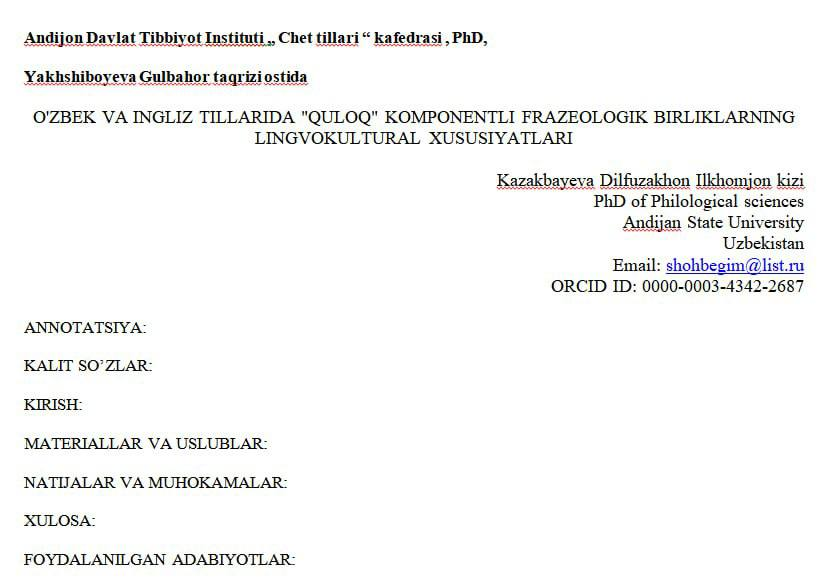DERIVATION AND ITS TYPES
Keywords:
Derivation, morphology, lexical morphology, inflection, affixation, compounding, literature analysis, empirical evidence, linguistic structures.Abstract
This article provides an in-depth exploration of derivation and its various types. Derivation, in linguistic terms, refers to the process of creating a new word by modifying an existing one. This article aims to elucidate the concept of derivation, highlight its significance in language formation, and delve into the different types of derivational processes. Through a comprehensive literature analysis, we discuss the methods employed in studying derivation, present empirical evidence, and analyze the results to draw meaningful conclusions. The findings contribute to our understanding of linguistic structures and processes.
References
Ibayev A.J. Comparative analysis of the derivation of simple sentences in English and Uzbek// International Journal for Research in Applied Science & Engineering Technology (IJRASET) ISSN: 2321-9653; Volume 10 Issue IVApr 2022. – P. 2146-2150. (SJ Impact Factor: 7.538).
Ibayev A.J. On the derivational features of corporate small syntactic structures// European multidisciplinary journal of modern science. ISSN 2750-6274; Volume: 6 | 09.05. 2022. – P. 311-315 (Impact Factor: 7.85).
Ajongolo, T. O. 2005. Negation in the Ào Dialect of Yoruba. PhD Thesis, University of Ibadan, Ibadan, Nigeria.
Radford, Andrew. 1997a. Syntactic theory and the structure of English: a minimalist approach. Cambridge textbooks in linguistics. Cambridge, U.K.; New York: Cambridge University Press
Chomsky, Noam. 1995a. “Bare Phrase Structure.” In Government and binding theory and the minimalist program: principles and parameters in syntactic theory, edited by Gert Webelhuth, 383–440. Oxford, UK; Cambridge, Mass: Blackwell














